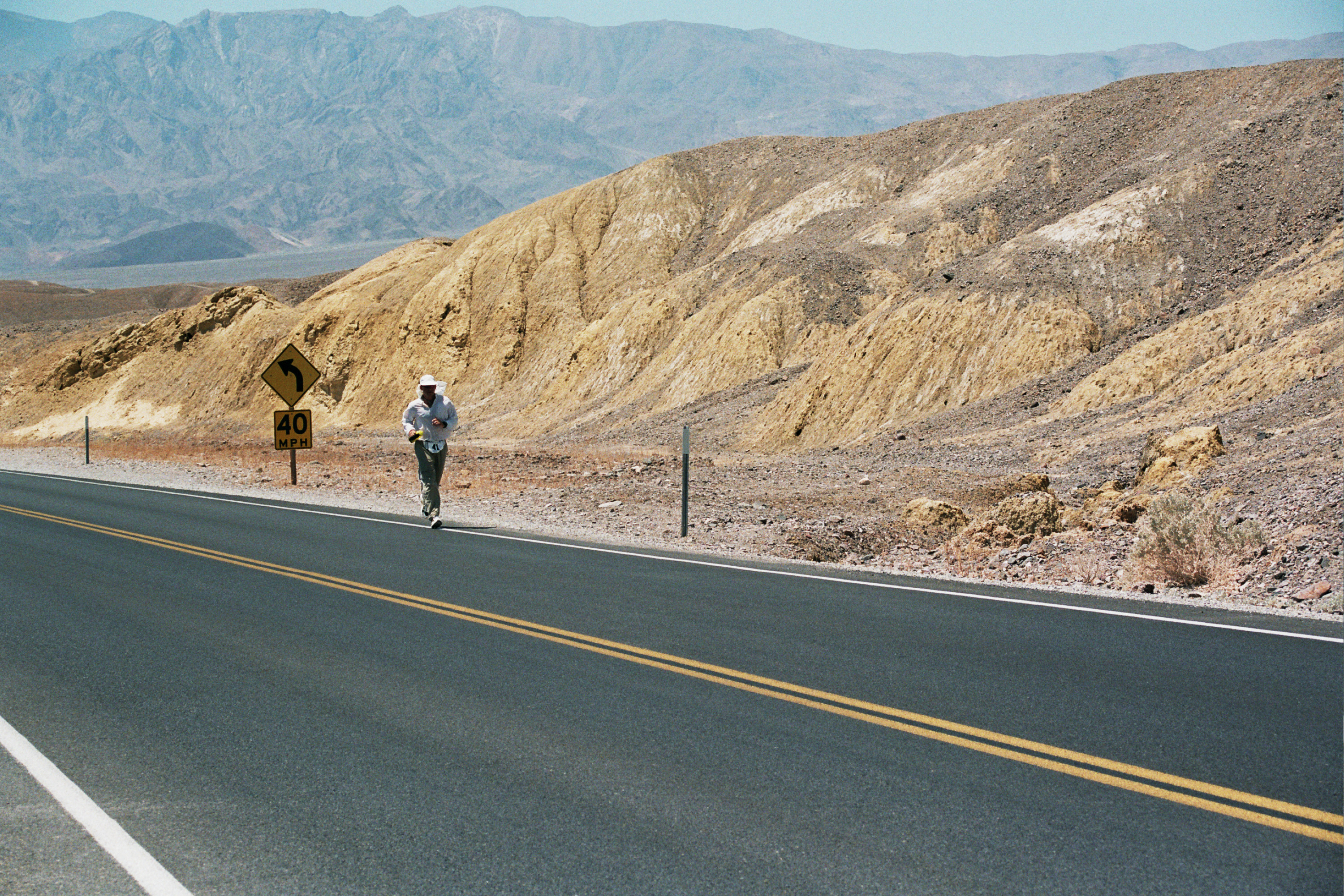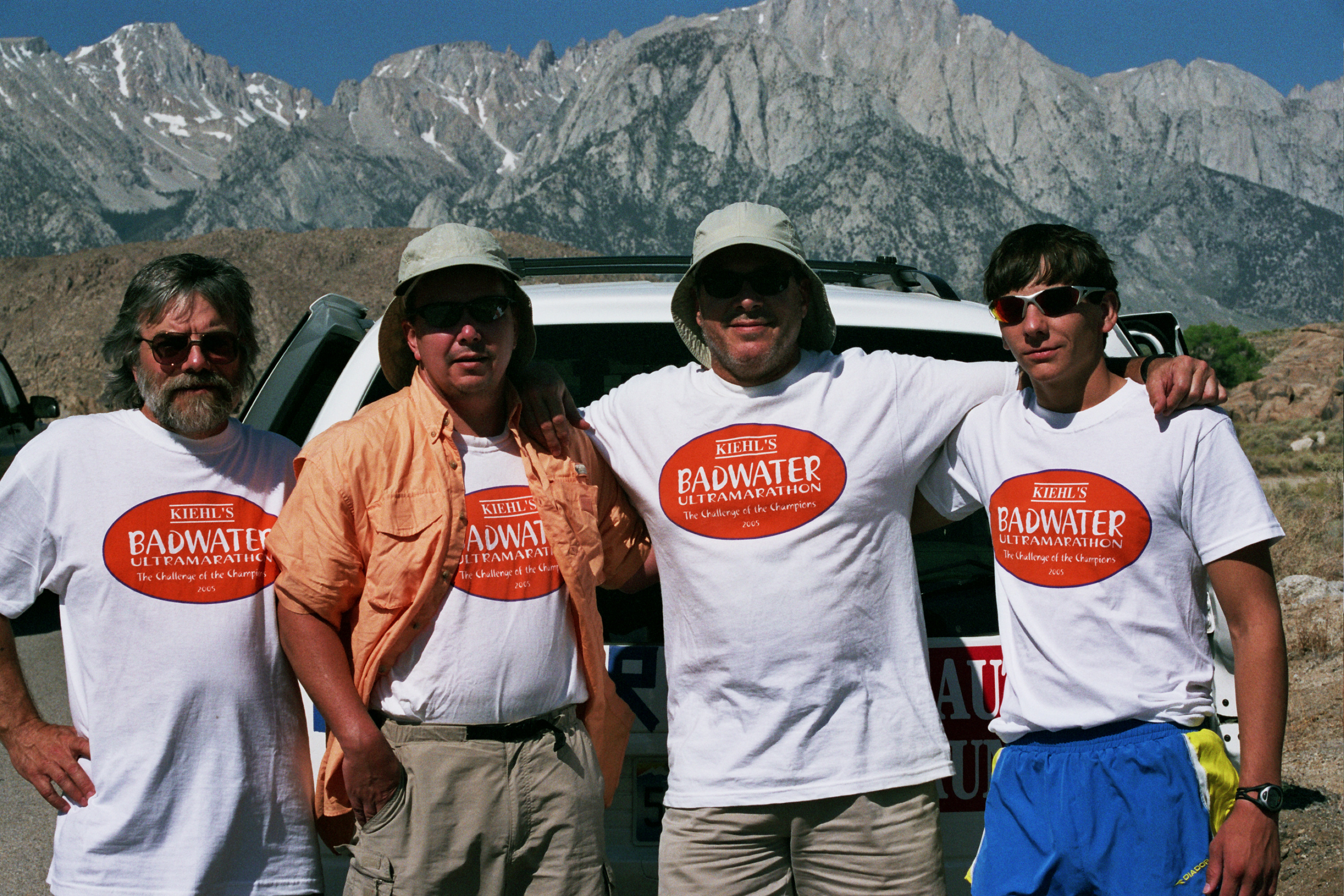![]()
Can't stop, won't stop
A growing number of runners and adventure racers have a new addiction: extreme races and ultramarathons -- events that stretch over hundreds of miles of barren wilderness.Kate Santich | Sentinel
Staff Writer
|
 |
In July, the financial adviser did a second run in California -- a 135-mile trot through Death Valley, where air temperatures neared 130 degrees, hot enough to melt the glue in a runner's shoes. He crossed the finish line after 52 1/2 hours, much of it spent vomiting and being miserable.
In August, Harper went to Colorado for yet another run -- 100 miles
through the Rocky Mountains. The lowest point on the course was 9,200
feet above sea level. He made it 60 miles before he failed to make a
cut-off time and race officials forced him to stop.
"I really didn't
feel bad at all, either," he says. "I
just couldn't breathe."
That tends to pose problems.
But the most remarkable thing is not that Harper, a former Ironman triathlete and competitive cyclist, spent a summer running over and through some of the most extreme territory in the continental United States.
The real stunner is that, these days, there are thousands more like him -- driven, daring, obsessive souls who do these things for no more glory than a cheap finisher's medallion.
Not so long ago, it was a popular personal goal to run a 5-kilometer road race. Then you graduated to a 10-kilometer, and eventually, if you were truly possessed, a marathon. Now, Ironman-distance triathlons -- each a 2.4-mile swim, 112-mile bike ride, then a marathon -- fill to capacity within hours of opening for registration, though they typically cost $350 per person or more.
In fact, races that double and even triple the Ironman distance have popped up, and so, too, have a growing number of sadistic adventure races through some of the most forbidding places on Earth. One recent event took competitors through the Everglades (alligators, water moccasins and all).
Last year the competition even turned deadly: Two men died in different extreme events in the wilderness of Washington and Utah. Yet neither tragedy caused a subsequent drop-off in such events' popularity.
Harper has spent thousands on entry fees and travel expenses for himself and his crew(shown here) |
If Americans
are supposed to be so lazy and out of shape, who are all these
people? And why are they doing this? Of course, NFL players can make millions of dollars. Harper has spent thousands of dollars this year alone on entry fees, hotel rooms and airfare for himself and his support crew. |
You might have seen him around Lake County this summer, training in
95-degree heat and 95-percent humidity. He was the guy doing hill repeats
for three hours on Sugarloaf Mountain. It was how he spent most weekends.
He would arrive home dripping with sweat, shoes sloshing, looking rather
like he just emerged from a lagoon. Just for amusement, he'd throw open
his arms as if for a hug.
"Ewww!" his 11-year-old daughter would say, recoiling.
His son, 7, would just roll his eyes. "Gross, Dad."
Hawaiian history lesson.
Much of the insanity of the whole extreme-sports movement can be traced
back to the 1982 Ironman triathlon in Hawaii. There, on national television,
a 23-year-old, freckle-faced college student named Julie Moss -- who
unexpectedly found herself leading the women's race -- collapsed within
a quarter-mile of the finish line.
She staggered to her feet, took a few wobbly steps, and fell again. A second time she rose, and a third time she fell. Finally, on hands and knees, having lost control of many of her bodily functions, she crawled to the finish. It might have left some viewers aghast. But in her struggle, others saw a triumph of the human spirit. And they began to wonder what they, too, were capable of.
Participation in the race surged -- so much so that entry is now limited to a handful of elite triathletes who are top finishers at a series of qualifying events. Too, the Ironman name has been franchised to 18 such races around the world, from Wisconsin to Korea. Ironman Lake Placid in New York, held in July, accepted 2,500 athletes. Registration filled within 10 hours of opening.
"These things usually start out as a fitness challenge, but then it's like, been there, done that, and you want something harder," says seven-time Ironman finisher Fred Sommer, president of Clermont-based Sommer Sports Inc., a race promotion and management company.
Perhaps, he says, those who seek the extreme are the same sorts who once charted unknown wilderness or set sail for new lands.
"I think, in another time, my husband would have been an explorer," agrees Harper's wife, Tamara Harper. "When he was a kid, he used to pretend he was Davy Crockett, and I think they even called him Davy."
Hard bodies and software.
One day amid this summer's heat wave, a buff but haggard-looking foursome trotted down A1A in Daytona Beach at midday, looking as if they hadn't had any sleep in a couple of nights.
They hadn't.
This was the Atlantic Coast Conquest, a 30-hour adventure race through
bug-infested canals, muddy trails and a fair amount of beach traffic.
"We were just sweating
like mad," says Jason Amadori, a 32-year-old
software-company executive from Windermere. "There was no shade.
We just kept running into convenience stores and grabbing cups of ice
and Mountain Dew and throwing the cashier money. 'Keep the change!' "
It may not have been much of a wilderness, but Amadori felt like a frontiersman anyway. A veteran of soccer, beach volleyball and several Ironman triathlons, he has ultimately focused on adventure racing for his fix. After long weeks jetting cross-country on business, he'll unwind with an overnight training session of six hours of mountain biking and running through the woods with a few close friends.
"What kills me is I sit at a desk all day for eight, 12 hours or I'm on a plane to California," Amadori says. "I need something physical. I need a challenge. For me, it's about conquering the unknown -- how far can I go? How hard can I push myself? You haven't really lived until you've completed one of these things."
Earlier this week, Amadori and three friends were selected to compete in next year's Primal Quest, a five- to 10-day, 372-mile unsupported journey through the wilderness that has succeeded the Eco-Challenge as the world's premier adventure race. It will cost him and his teammates at total of $8,000 just to enter, plus they must cover their own airfare and an estimated $5,000 worth of equipment.
In 2004, a 38-year-old Australian man died in the event when a rockslide
sent a 300-pound boulder tumbling down on him.
"You can get killed
riding your bike down the street," Amadori
says, unswayed.
He may view the death as a freak accident, but no one denies that such ventures come with risks. Ultra-athletes have been known to suffer dehydration, stress fractures, kidney failure, intestinal damage, a suppression of testosterone levels and a temporary weakening of the immune system.
It's not for the youngPerhaps surprisingly, though, the ultra world is not populated by the
very young. Instead, it is largely the province of those in their 30s,
40s, 50s and beyond, some of whom discover their competitive drive later
than most.
" I was always the kid who was picked last for phys-ed
basketball and phys-ed baseball and that kind of thing," says
John Moorhouse, 35, an Altamonte Springs mountain-biker. "I
was kind of the high-school dork when it came to that stuff."
But he found his gift in cycling and motocross, and six years ago, approaching
his 30th birthday, he did his first 24-hour mountain-bike race, finishing
fourth in his division. He was hooked. Sometimes he grows so weary during
a race he has to pull off the trail and lie down in the woods.
" You really can't sleep at that point because the adrenalin
is still rushing through your body," he says. "But it just
helps to give yourself a break."
Rob Kish -- a Port Orange surveyor and bicyclist who has completed 3,000 miles of nonstop Race Across America an astounding 20 times, including three wins -- is 51 and still going strong. In early September, he took on LeTourDirect, which essentially boils down the Tour de France's three weeks into one stage.
Pam Reed, a 44-year-old Arizona woman who has twice won the 135-mile Badwater Ultramarathon through Death Valley against both men and women, this spring set a record for running nonstop -- 301 miles in 79 hours, 57 minutes. In so doing, she trumped plans for a 300-mile record by rival Dean Karnazes, a 41-year-old health-food-company executive known to order pizza by cell phone during his runs. Karnazes has since announced he will attempt 326 miles later this year.
Those two are spring chickens compared to Helen Klein of Rancho Cordova, Calif., who continues to compete in 50- and 100-mile races at age 82. A former nurse, she didn't take up running until age 55. How long can she continue? How far can Reed or Karnazes -- or those who come after them -- run? How much more extreme can sports become?
"We just don't know," Kraemer says. "I don't know if we thought there could ever be a sub-2:05 [two-hour-and-five-minute] marathon, but now there is. Years ago, we didn't think a person could squat 1,000 pounds, either, but they can."
Scientists do know the
body can be trained to tolerate extreme heat, cold and sleep-deprivation.
It can learn to absorb fluids and calories more efficiently. It
can learn to conserve energy even while going the same pace. "There are not a lot of studies, actually," says Dr. Tom Peters, a Henderson, Nev., internal-medicine specialist who works at -- and sometimes competes in -- ultramarathons. "During the event, it can be pretty scary to see some of these folks and what they go through. Some of them look so bad that you say, There's no way in heck that they can make it. And then you see them later at the finish line, come back from the dead. It's absolutely inspiring." Ultimately, it is the mind, athletes and experts agree, that is most important. Many competitors speak of hallucinating during long events. Many will break down in tears. Others grow angry, disillusioned, disheartened. Some just plod on, staring blankly. |
|
"The hardest part of this is having the mental toughness," Peters says. "You have to learn to endure pain and discomfort, and not be afraid of it."
Never again?
At some point in virtually every extreme race, David Harper promises himself that, if he can just make it to the finish line, he will never do such a foolish venture again.
And the next day or the next week, when he signs up for yet another race, he promises his patient and supportive wife that this, surely, will be his last. Perhaps part of him even believes it.
"I've had the running summer of a lifetime and am going to take a break and enjoy it," he announced recently.
"Oh, puh-leeze," his wife said.
Harper sighed. No one believes him anymore.
"You can't even complain
to anybody, really," he says. "If
I say, 'You know, when I run more than 80 miles, my foot hurts,' -- nobody
has any sympathy. They're just like, 'Well, maybe you shouldn't do
that.' "
![]()
